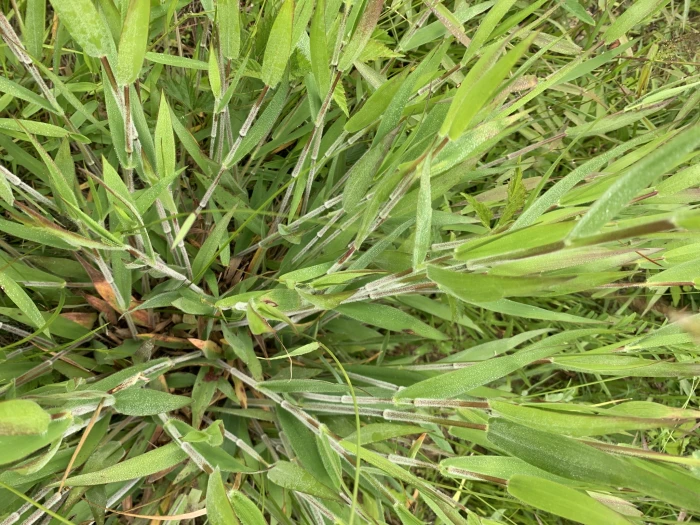Broomcorn Millet
(Panicum scoparium)
Broomcorn Millet (Panicum scoparium)
/
/

Ashwin Srinivasan
CC BY 4.0
Image By:
Ashwin Srinivasan
Recorded By:
Copyright:
CC BY 4.0
Copyright Notice:
Photo by: Ashwin Srinivasan | License Type: CC BY 4.0 | License URL: http://creativecommons.org/licenses/by/4.0/ | Rights Holder: Ashwin Srinivasan | Publisher: iNaturalist | Date Created: 2021-05-16T13:47:08Z |



















Estimated Native Range
Climate Requirements for Tracy, California
| This Plant | Your Site | Plant Suitability for Your Location | ||
|---|---|---|---|---|
| • Precipitation | 41" - 91" | 10" | Your precipitation may be insufficient for this plant. Irrigate N" / year. | Irrigate N" / year |
| • High Temp. | 83°F - 94°F | 92°F | Your summer temperatures are normal for this plant. | Excellent |
| • Low Temp. | 26°F - 40°F | 37°F | Your winter temperatures are normal for this plant | Excellent |
This plant should grow well at your location with about N inches per year (Y minutes per month) of irrigation.
Summary
Panicum scoparium, commonly known as Broomcorn Millet, is an annual grass native to the prairies and plains of North America, including regions such as the Great Plains and Midwest. It can grow up to 1 meter tall and is characterized by its dense, broom-like flower clusters that appear in late summer. The flowers are typically greenish to purplish and are not particularly showy, but they do produce a significant amount of seed.
Broomcorn Millet is valued for its rapid growth and ability to stabilize soil, making it an excellent choice for erosion control. It is also cultivated for birdseed, as the seeds are a favorite among many bird species. In gardens, it can serve as a temporary screen or as part of a wildlife-friendly planting. This grass thrives in full sun and is highly drought-resistant, making it suitable for xeriscaping. It adapts well to a variety of soil types, though it prefers those that are well-drained. While it is generally free from serious pests and diseases, it can become weedy if not managed properly and may self-seed in favorable conditions.CC BY-SA 4.0
Broomcorn Millet is valued for its rapid growth and ability to stabilize soil, making it an excellent choice for erosion control. It is also cultivated for birdseed, as the seeds are a favorite among many bird species. In gardens, it can serve as a temporary screen or as part of a wildlife-friendly planting. This grass thrives in full sun and is highly drought-resistant, making it suitable for xeriscaping. It adapts well to a variety of soil types, though it prefers those that are well-drained. While it is generally free from serious pests and diseases, it can become weedy if not managed properly and may self-seed in favorable conditions.CC BY-SA 4.0
Plant Description
- Plant Type: Grass
- Height: 2-4 feet
- Width: 1-2 feet
- Growth Rate: Moderate
- Flower Color: N/A
- Flowering Season: Summer, Fall
- Leaf Retention: Semi-deciduous
Growth Requirements
- Sun: Full Sun, Part Shade
- Water: Low
- Drainage: Medium
Common Uses
Bird Garden, Border Plant, Butterfly Garden, Drought Tolerant, Erosion Control, Low Maintenance
Natural Habitat
Prairies and plains of North America
Other Names
Common Names:
Scientific Names: Panicum scoparium
GBIF Accepted Name: Panicum scoparium